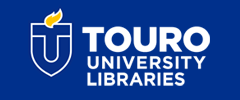NYMC Faculty Publications
Redox Mechanisms Influencing cGMP Signaling in Pulmonary Vascular Physiology and Pathophysiology
DOI
10.1007/978-3-319-63245-2_13
First Page
227
Last Page
240
Document Type
Book Chapter
Publication Date
10-18-2017
Department
Physiology
Keywords
pulmonary vascular disease, soluble guanylate cyclase, cyclic guanosine monophosphate, protein kinase G, nitric oxide, reactive oxygen species, ROS, thiol oxidation, heme redox, NADPH oxidase
Disciplines
Chemical and Pharmacologic Phenomena | Circulatory and Respiratory Physiology | Medicine and Health Sciences
Abstract
The soluble form of guanylate cyclase (sGC) and cGMP signaling are major regulators of pulmonary vasodilation and vascular remodeling that protect the pulmonary circulation from hypertension development. Nitric oxide, reactive oxygen species, thiol and heme redox, and heme biosynthesis control mechanisms regulating the production of cGMP by sGC. In addition, a cGMP-independent mechanism regulates protein kinase G through thiol oxidation in manner controlled by peroxide metabolism and NADPH redox. Multiple aspects of these regulatory processes contribute to physiological and pathophysiological regulation of the pulmonary circulation, and create potentially novel therapeutic targets for the treatment of pulmonary vascular disease.
Recommended Citation
Patel D, Lakhkar A, Wolin MS. Redox mechanisms influencing cGMP signaling in pulmonary vascular physiology and pathophysiology. In: Wang YX, editor. Pulmonary vasculature redox signaling in health and disease. Adv Exp Med Biol. Vol. 967. Cham, Switzerland: Springer International Publishing; 2017. pp. 227-40.


